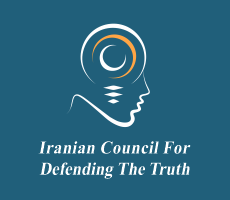Chairman of the Russian-Iranian Business Council Vladimir Obydenov recently told Iran’s Tahlil Bazaar that his side has currently submitted a proposal at the interstate level for the creation of an Iranian-Turkish-Russian economic corridor. To be exact, he was asked by the outlet about the extent to which the North-South Transport Corridor (NSTC) has been effective for increasing bilateral trade between Russia and Iran, to which he gave the following answer:
Before making any concrete conclusions about the effectiveness of the North-South International Transport Corridor for the development of trade relations between our countries, it is necessary to turn to more actual problems and distract from posing the issue in a global aspect.
At the moment, Russia and Iran need to solve a number of logistical problems, including the instability of road transport across the Iran-Azerbaijan border, difficulties associated with the transportation of goods by sea along the Caspian Sea (insufficiently developed infrastructure of Caspian ports, lack of phytosanitary control posts in ports, silting Volga, preventing the passage of merchant ships to the port of Astrakhan, etc.). As a result, there is a need to find alternative logistics routes. The Russian-Iranian Business Council is actively involved in work on this important issue.
In particular, one of our proposals, which we are currently submitting to the interstate level, is the creation of a route for the Iranian-Russian cargo traffic through Turkey, namely through Samsun port.
Mr. Obydenov’s response contains some significant insight that’s worth reflecting upon. Firstly, some serious logistical problems still exist along the NSTC, especially with respect to transport across Azerbaijan and the Caspian Sea. Secondly, it seems as though he’s reconciled himself with the scenario that they won’t be resolved anytime soon. Thirdly, this expectation is what inspired him to pitch the idea of incorporating Turkey into the NSTC since its connectivity infrastructure presents a practical solution to those problems.
It’s worth noting that Iran, Turkey, and Russia diplomatically cooperate in Syria through the Astana peace process, yet trilateral economic ties between them haven’t been forthcoming. In fact, few might have even thought of this possibility before, which might not have even been seriously considered had it not been for the problems that allegedly plague the NSTC. This goes to show that every obstacle can lead to an opportunity since it’s arguably in Iran’s and Russia’s interests to expand the NSTC to Turkey.
Economically strengthening the Iran-Turkey-Russia Troika can lead to the development of more meaningful ties between them. Their economies are all promising though each has their respective problems. Nevertheless, they also complement one another and are capable of functioning as anchors of a new regional connectivity structure. More precisely, Azerbaijani President Aliyev earlier proposed the creation of a six-party regional connectivity platform after the end of last year’s Karabakh War.
This would bring together those four countries, Armenia, and Georgia. As is now known from Mr. Odydenov’s disclosure to Tahlil Bazaar, this is a lot easier said than done due to preexisting connectivity challenges that will still take quite some time to adequately address. In the meantime, there’s a demand to expand trade between those three Great Powers, which is why it makes sense for its Russian-Iranian dimension to transit through Turkey. The Anatolian nation can then naturally profit from transit fees and also add value along the route.
The NSTC isn’t just between Iran, Azerbaijan, and Russia though since India was expected to function as its southern anchor. It can still fulfill that role, but New Delhi presently has serious diplomatic problems with Ankara and Baku after both of them doubled down on their support of Islamabad’s stance towards the Kashmir Conflict in response to Pakistan’s support for Azerbaijan’s and Turkey’s stance towards Karabakh. For this reason, some in India have thought of pioneering a workaround to Russia and the EU via Armenia and Georgia.
That’s still possible even if Iran and Russia jointly decide to expand part of the NSTC to Turkey for reasons of economic pragmatism as explained by Mr. Obydenov. In fact, it can be argued that the NSTC should expand across as many geographic vectors as possible in order for Iran to take maximum advantage of its geostrategic location in pursuit of cutting-edge geo-economic ends. The Islamic Republic is uniquely positioned to connect multiple regions of Eurasia, which should be one of the priorities of newly inaugurated President Raisi.
The initial NSTC vision of an India-Iran-Azerbaijan-Russia corridor lays the basis for its expanded visions of ones that incorporate Armenia-Georgia and Turkey. The end goal has always been for India and Iran to trade with Russia and the EU regardless of whichever transit states they must first traverse to do so. Likewise, Russia can still trade with India irrespective of which of the three routes it utilizes. Furthermore, Russia and Turkey can both trade with their mutual partners in Pakistan through Iran too.
The proposal to incorporate Turkey into the NSTC is so pragmatic and mutually beneficial that it makes one wonder why it wasn’t thought of before. Turkey has some of the most developed connectivity infrastructure in this part of Asia and it also already trades a lot with Russia as it is. It’s therefore natural to include it in the NSTC as a means of facilitating Russian-Iranian, Russian-Pakistani, and even Russian-Indian trade, the latter of which might not ever scale up all that much due to New Delhi’s political sensitivities related to that route.
In any case, it’s clear to see that a new regional economic network is emerging between Iran, Turkey, and Russia, which will advance Azerbaijan’s plans for a six-nation regional integration platform and also assist Russia’s and Turkey’s trade with South Asia too. Iran is right in the middle of all of this and can therefore benefit immensely so long as this strategy is properly managed. Its new 25-year strategic partnership with China could even be leveraged to turn Iran into a regional production powerhouse for adding value along all economic axes.

